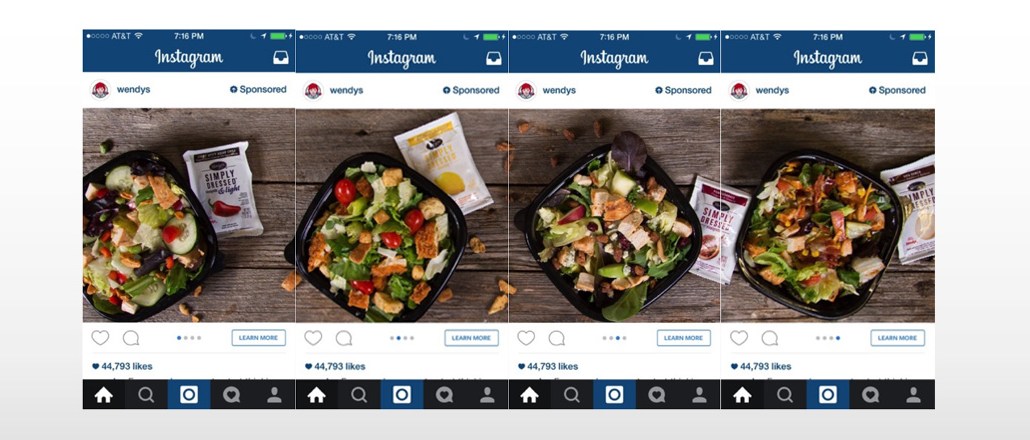
What’s more profitable than one video ad? Multiple video ads at the same time.
Instagram is expanding its ad carousel unit to now include five separate videos, up to 60 seconds long. The photo-sharing app launched the carousel last fall, letting brands add multiple images into a swipeable format along with a link that directs people to the company’s website.
The format has been a hit: People are 10 times more likely click on photo carousel ads compared to a static sponsored post, so Instagram is likely hoping the same success rate happens for the video-heavy carousel format.
Airbnb, Macy’s, ASOS, and Taco Bell, which has skillfully made fun of recipe videos in its latest Instagram campaign, are among the first brands to try the carousel. The new ads are sold on a cost-per-thousand basis. (In December, Digiday reported that Instagram ad prices were about 65 cents per click, or between $5.75 and $6 for a thousand views.)
Instagram has been pushing video on to its users lately. In March it extended the total possible length of videos from 15 seconds to a minute and remodeled the Explore tab to show off more videos.
Users will begin seeing the new ads in the coming weeks.
More in Media

Podcast companies turn to live events to capture growing advertiser spend
The surge in the number of live podcast events in 2025 reflects a broader shift: advertisers are betting bigger on podcasts — not just as an audio channel but as a full-fledged creator economy play.

Media Briefing: ‘Cloudflare is locking the door’: Publishers celebrate victory against AI bot crawlers
After years of miserably watching their content get ransacked for free by millions of unidentified AI bot crawlers, publishers were finally thrown a viable lifeline.

How Vogue could navigate potential industry headwinds as Anna Wintour — who agency execs say made ad dollars flow — brings on new edit lead
Anna Wintour’s successor at Vogue will have to overcome the myriad of challenges facing fashion media and the digital publishing ecosystem.





